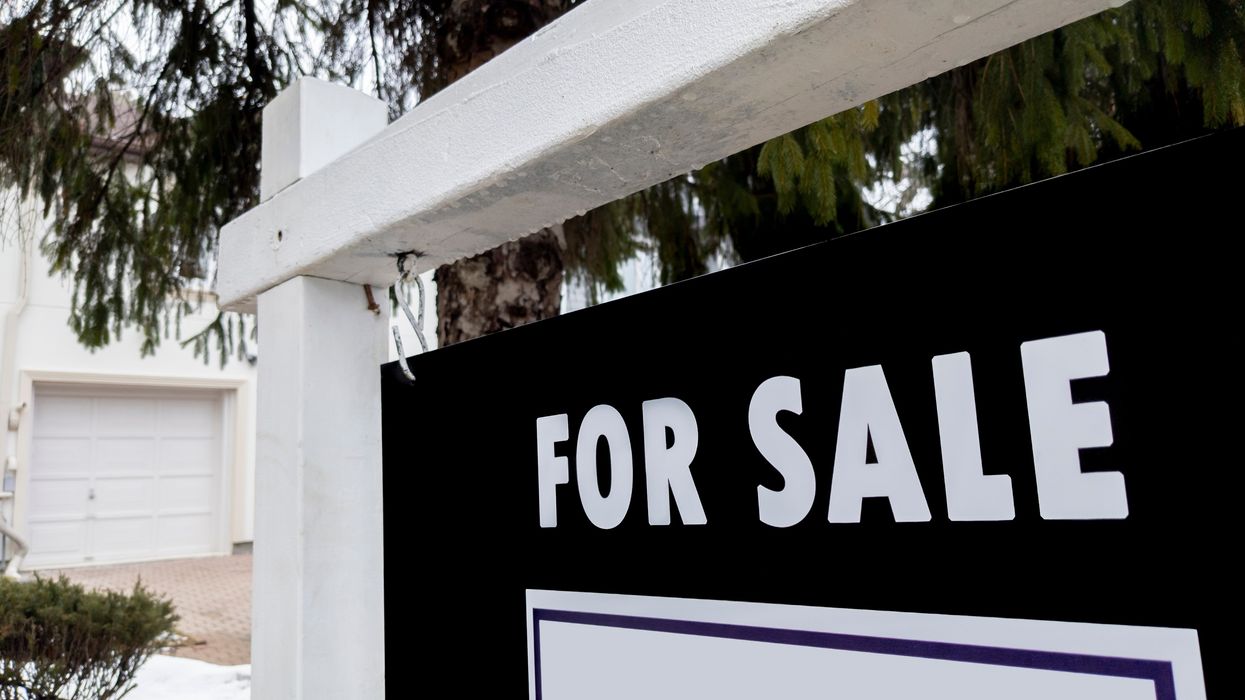Predicting what lies ahead for the year, whether it’s trends or prices, is a matter of knowing what factors are at play, including the economy and government policies.
As a developer, real estate consultant, planner, retired architect and former Canada Mortgage and Housing Corporation official, Michael Geller has about 50 years of experience behind him. Each year he puts out an annual holiday card with a list of housing ideas regarding policy changes that could generate better design, more efficiency and affordability.
“I call them predictions and sometimes they are aspirational,” says Geller.
Several of Geller’s recommendations from 2021 and 2022 ended up as new provincial legislation in 2023, including the call for “missing middle” multiplex housing on single-family lots, reducing parking requirements, streamlining the approvals process at city hall, eliminating the need for so many public hearings, reducing the number of rezonings and overhauling the community amenity contributions that developers must pay when they seek a rezoning. Through a series of sweeping housing policy reforms, the Province enacted these measures in some way, as part of an all-encompassing housing program last year.
This year, he’s hoping his batch of ideas for 2024 also catches the provincial government’s attention.
He applauds the Province’s new fixed amenity cost charges, which replace the negotiated community amenity contributions (CACs) and bring certainty to projects; however, Vancouver’s fees are still much higher than those in Toronto and Montreal. Such costs are transferred to new buyers. Another recommendation is that the levels of government stop seeking massive building density to generate revenues.
“I really think we need to reconsider trying to generate revenues at the municipal level by almost encouraging people to build larger buildings so the municipalities can then collect more CACs,” he says.
“People think, ‘Oh if you allow a bigger building it will be more affordable.’ Well, some will be, but it doesn’t work that way.”
If a building gets upzoned from a floor space ratio of 2 to 4, for example, that re-sets the price of the land, he says. From thereon, a developer will pay more for the site because of that added density.
“Because at the end of the day, you go to the butcher and buy steak by the pound and developers buy property by the square foot.”
He also calls for a two-tier system of taxing residential properties so that multi-family units are taxed at a lower rate than detached houses. He’d like to see housing mixed with light industrial to open up industrial land. He forecasts that intergenerational home sharing will become a huge trend this year with several home-sharing platforms already underway, such as Common.com, Nesterly, Sparrow Share, HomeSharingBC.ca and SpacesShared, to name a few.
“You watch, that will eventually become a big story,” says Geller, who’ll be speaking on the topic at an upcoming Toronto housing conference. “When I was at university and when I had my first job, I shared accommodation…. It’s kind of like WeWork concept but applied to residential accommodation.”
His other ideas include policy that makes it easier to incorporate highly efficient manufactured housing into building design, and approvals for individually owned rowhouses (called fee-simple). As well, he’d like to see cities offer density bonuses to protect character houses that are vulnerable to redevelopment, especially with multiplexes now approved in single-family zones.

Vancouver realtor and investor Bryan Yan enjoys making predictions and for the last several years, his predictions have turned out accurate by year’s end.
In 2021, he predicted that detached house prices would go up in Metro Vancouver by 15% in 2022, which they did. In 2022, he predicted price drops for early 2023 of 10%, which also played out.
This year, he says, buyers and sellers don’t need predictions — they should just use prime interest rates as a guide.
The overnight rate determines the prime rate for the lenders. He says history has shown that if the Bank of Canada rate comes down, prices will eventually go up. He cites Real Estate Board of Greater Vancouver data from 1994 to 2003 that show price increases of detached houses and condos stayed flat when prime interest rates averaged 6.3% over a 10-year span.
But from February 2009 to June 2016, when the prime rate was at 2.66%, the market saw a 147% price increase.
And from January 2020 to May 2022, the prime rate of 2.825% triggered a 43.5% price increase.
Once the rate got up to 6% from May 2022 to January 2023, prices dropped 13.5%.
“When the prime rate is around 3% and below, expect huge returns well over 10-15%. Above a 6% prime rate, expect flat to negative returns. If the prime rate is between 4 and 5%, the prices will appreciate about 5-10%. Currently, the prime rate is a whopping 7.2%.
“Basically, regardless of the foreign buyers’ ban or immigration numbers, it’s interest rates that affect everybody, even though it doesn’t really affect people with assets and a lot of money,” says Yan. “They are buying any time. Based on Statistics Canada, the people who bought 50% of the condos and 13% of houses last year were buying investments, so they are looking at their return on investment… places like downtown Vancouver or Burnaby, the rents are good, they can cover most of the mortgage.”
Royal LePage’s annual market survey forecast for 2024 predicts a modest year-over-year increase of 3% for the Vancouver region, bringing the aggregate price of a home to $1,281,732. A detached house will see a median price increase of 2.5%, at $1,778,785, and the median price of a condo will go up 4%, to $795,808. Meanwhile, Canada will see an aggregate home price increase of 5.5% by the fourth quarter.
Their report says interest rates will guide prices. Higher interest rates will “keep a lid on price appreciation, even as activity picks up.”

Hani Lammam, Executive Vice President of Cressey Development Group, says prices will continue to go up if people can afford to pay those prices, whether it’s monthly rent or mortgage payments.
“The market is pretty quiet right now, but not because of demand,” he says. “There is a lot of demand in the marketplace, but it is a bit of a stalemate, where the purchaser thinks prices will drop and the seller is saying, ‘No, there is a ton of demand and I can wait, I’m in no rush to sell.’ They are not in distress. The reality is, I don’t think prices will come down, I’m just not sure if they will go up.”
His prediction is that it will be a quiet first six months, then the market will start to pick up in the fall by the third or fourth quarter.
“Unique projects will sell, but those generic offerings will struggle,” says Lammam. “There’s a dozen of them in Brentwood. Most of that stuff gets sold to investors, which is not bad. It takes four to five years to build — no end user would buy it. They are bought by investors making a bet that by the time this thing is built, it will be worth more than they bought it for. That’s the motivation. Or ‘I buy at a good price today and rent it and down the road, I make a return.’ So, investors are the ones buying in those big projects and if they can envision an upside, they will continue to buy.”


















